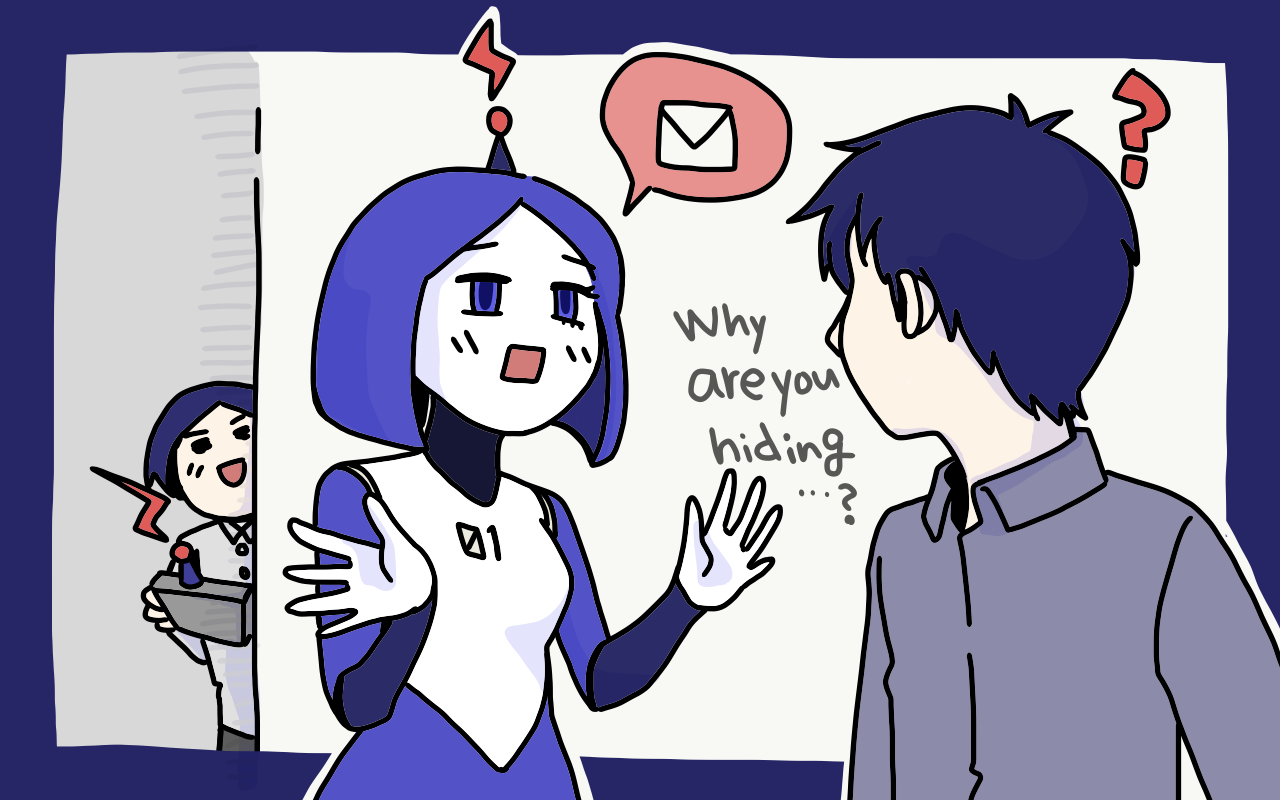This 13-Year Old Wanted School to Reopen, So He Built an App

Life these days just isn't normal. The coronavirus pandemic has had devastating effects on the health, well-being and economic stability of countless families around the world. As a society, we are coping with new challenges: constant hand washing, masks, social distancing, and the closing of many businesses and services.
One of the only benefits of entering a brave new world is that these new challenges spur forth creative solutions, with sparks of ingenuity rising up from sometimes unexpected places.
One such spark was set off during a typical family dinner on July 24, at the Landa household in the Bay Area of California. Dave Landa was talking with his 13-year old son Taeden about how, for the time being, only the kids of essential workers would be allowed back to their local school. The school didn't have the option to do contact tracing and monitor symptoms for all kids, so a broader reopening wasn't on the table yet.
Taeden was not on the list. "I was feeling angry because I couldn't go to school and couldn't see my friends," he told us.
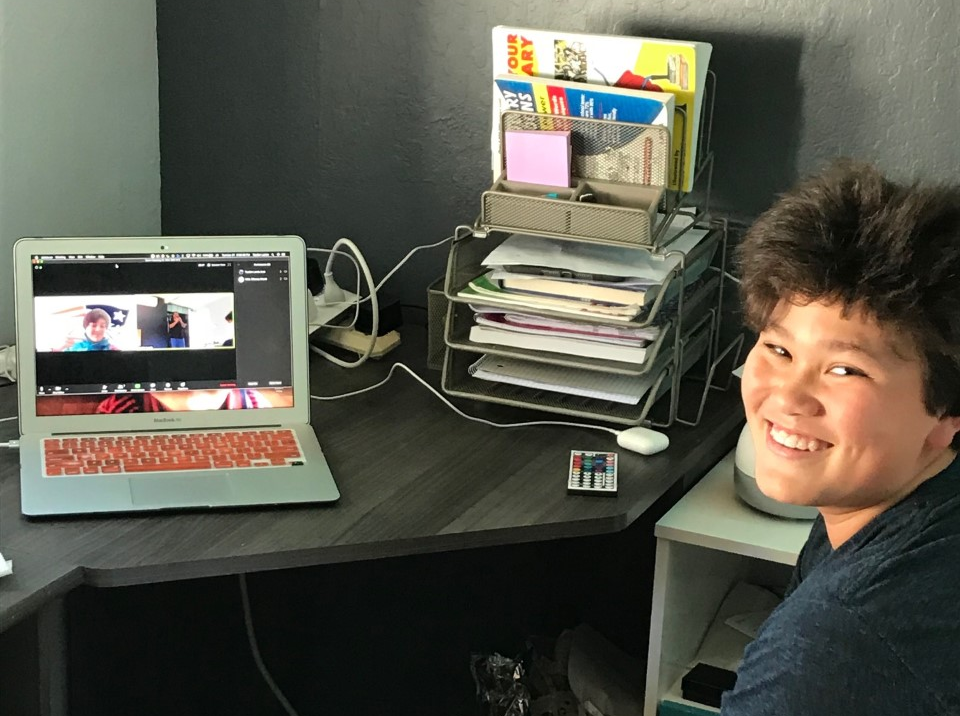
Taeden Landa, 13, on a Zoom call with his friends.
From there, the dinner conversation shifted to more work-related topics. Dave is the CEO of Kintone, a company that develops a teamwork software platform for businesses. Recently, by using smart databases, Kintone has been helping businesses keep track not just of workflow and ongoing projects, but also coronavirus-related information, like symptoms, testing and contact tracing.
As his dad was explaining how his software was enabling remote work, Taeden had an idea.
What if instead of using Kintone to allow people to stay away from each other, he used it to track the virus so that more kids could go back to school? If it was possible to build a platform that could keep track of all the inner workings of a major business, surely they could build one to monitor the health and safety of local teachers and kids?
He pitched the idea to Dave who—ever the entrepreneurial dad—replied, "Good idea! Let's build it together."
The next day, July 25, they opened a Kintone free trial and got to work.
The making of an entrepreneur
Taeden was a natural. He had been using MIT Media Lab's Scratch software to create code for years. Designing this platform was his chance to go back to class and see his friends. He wasn't about to pass it up.
He started by using a sample coronavirus screening and certification app, which he then customized to make it more user friendly for people without any technical knowledge. After that, he added IF functions to create automatic responses if students reported feeling unwell. Next, he created a fictitious student database, which he diligently populated with members of his favorite football team, the Detroit Lions.
With his main framework built, Taeden started thinking of other possible scenarios which would require a rapid response. For example, what if a student started feeling sick while at school? To cover that possibility, he created an illness report app.
Taeden had a first version of the app ready to go just a few days later, on July 28. "It was pretty easy to learn how to use Kintone. There was just a little coding involved with an 'IF' function but other than that there was no coding at all," he said.
To finish up, his mom and dad then did a few rounds of reviews and user testing, just to be sure every function was working properly.
On July 29, the app was complete. He decided to name it School Screen. Here's what it looked like.
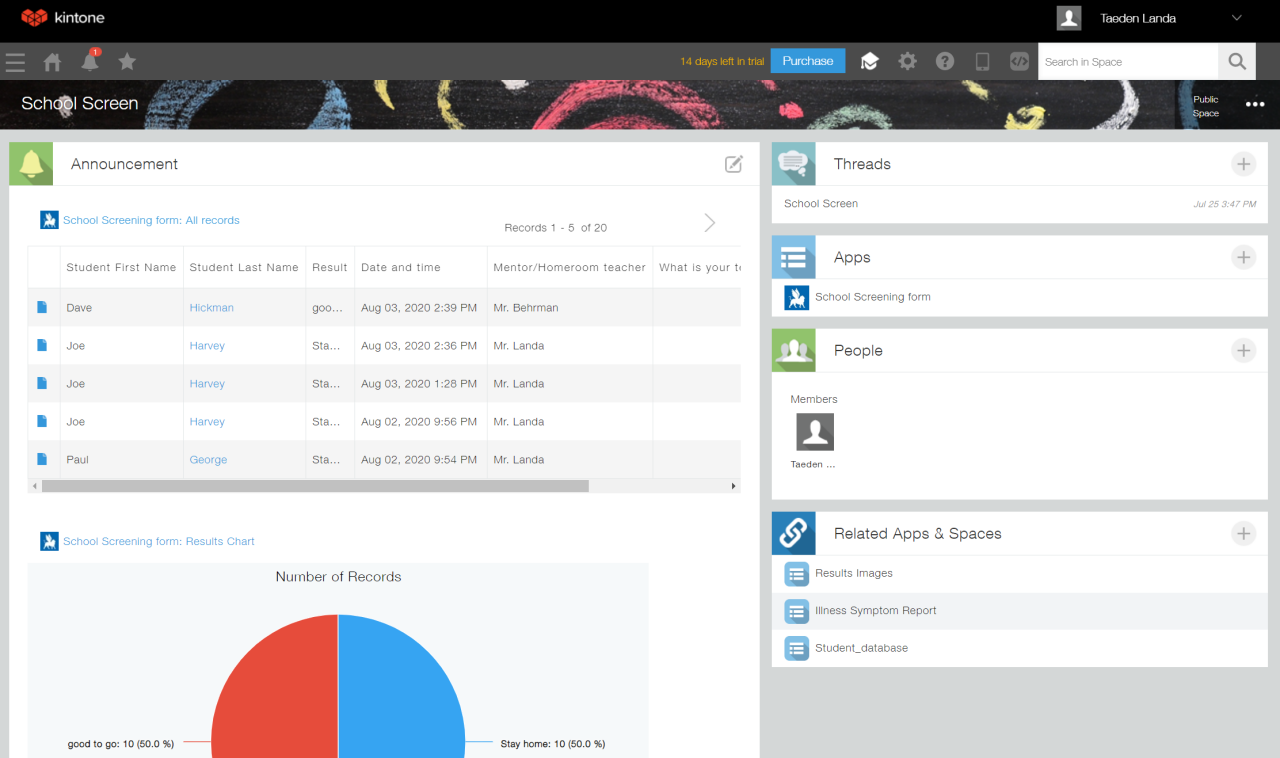
The main portal of School Screen. The student database and relevant graphics are placed to show up directly on the home portal. All other relevant information about symptoms, teachers and contact with other students can be accessed in just one click. Forms fill in automatically from the school's student database and the IF function can decide if the student is cleared to go to school or not.
Needless to say, Taeden was feeling confident. On July 30, with the help of his dad, he reached out to the school's administrative board.
Hello Mr. H, Ms. N, and Mr. H,
I hope you are having a great summer. I was thinking about school which is coming up soon and I really want to be able to go and see my friends in person. I was thinking about any way possible for my friends and me to be able to go to school in a way that may make it a little bit safer for teachers and students. So, I created an app with a little help from my dad that makes students and teachers certify that they don't have any symptoms and either allows them to go to school or not. I was wondering if you would be available to do a Zoom call with me at some point within the next week where I could show you the application and talk through some of the features that it has, and how it could maybe work for our school.
Thank You!
Sincerely,
Taeden
The next step was to wait, and they didn't have to wait very long.
A solution fit for the times
The school replied the very same day. Here's what they said, with the county name crossed out for privacy:
Dear Taeden,
It's so great to hear from you! I hope your summer has been going well. You said it so well when you described your desire to see your friends in person at school. I share in that desire, and planning for how to do so safely and in accordance with the guidelines from the State of California and the XXX County Health Department has been the focus of our work this summer. I applaud your initiative and creativity, and I'd love to see what you have come up with!
Our team has spent a significant amount of time attending virtual meetings with health officials and designing systems for our community safety. As you probably know, we are currently under orders from the state to start the year in distance learning mode for all while XXX County continues to mitigate the impact of COVID-19 to improve health and safety conditions for all residents. XXX, like many California counties, is currently on the state monitoring list for key indicators about the spread of COVID-19 and the county's capacity to provide medical attention to those who need it. Once we are no longer on that monitoring list for 14 days, XXX schools will be allowed to begin reopening. We don't yet know when that will be.
For those faculty and staff members who have needed to work on campus, in addition to observing physical distancing and hygiene requirements, we have been using a health questionnaire that requires anyone entering the campus to respond to several questions about their health. We are also planning and training to ensure these procedures, and more, will be in place in the future when we are permitted to bring students back to campus for teaching and learning. It sounds like you have been planning with these ideas in mind, too!
A zoom next week sounds great. How's Monday afternoon for you?
Mr. H.
Taeden had his foot in the door, all that was left was for him to make his pitch.
The meeting itself went smoothly. The school had obviously been thinking about this issue for some time and was delighted to hear a concrete, functional proposal. Taeden walked them through the software step by step.
Then the questions came.
Could the system guarantee privacy? Could it integrate with existing systems? The school didn't go easy on Taeden. After all, this was basically a business meeting.
"During the Zoom call with my school leaders I was very nervous," he said. "It was my first time trying to get feedback on something I created from adults who were not my parents or family. I was worried about what they would think."
Despite his nerves, and with just a little support from his dad, Taeden answered all their questions to their satisfaction, and beyond. All of his hard work and preparation had paid off.
The school administration loved it. Taeden's School Screen far outperformed the solution they had cobbled together on their own using spreadsheets. They congratulated Taeden on his creativity and commitment.
Sadly, there was a hitch.
A valuable learning experience
Toward the end of the Zoom call, the school informed Taeden they had just invested in a new, powerful, expensive tailor-made solution. After so much money spent, School Screen was not an option. They had to stick with what they had already paid for.
Nevertheless, the head of the school was impressed. He took it upon himself to introduce School Screen to other schools that hadn't made the same investment in custom technology—particularly public schools with lower budgets. He even offered to do some more user testing and provide feedback so that Taeden could further improve the app.
Taeden took the news in stride. "I didn't feel good or bad about their reply," he told us. "I was a little bummed out that they had already found something, but I was also excited because they said they would do user testing and give me feedback on my solution. They also told me that there are probably other schools who have not found a solution that might want to use mine."
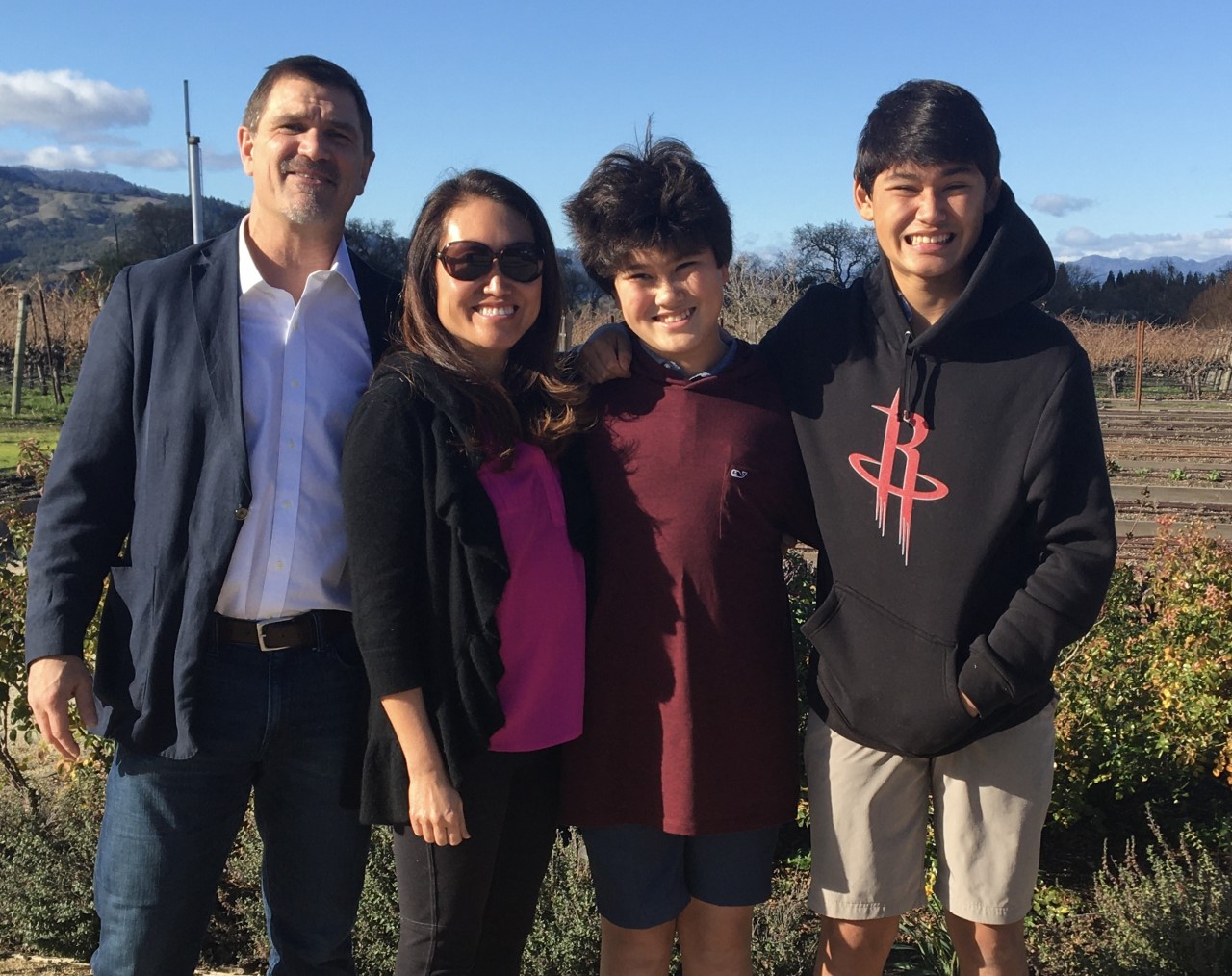
The Landa family
While we don't know yet how many schools will end up using School Screen, it certainly proved a valuable lesson to Taeden: With a little ingenuity and a lot of dedication, there's no problem that can't be solved.
As a matter of fact, trying to help his school fight a raging pandemic was just the beginning. Taeden is already thinking of other ways to use Kintone to help his community. When asked about what he wanted to do next, he told us, "I would like to create more solutions on Kintone and I already have a few ideas for the future. In particular, I realized that I can develop some apps that can help me manage parts of a new company that I started where we will be selling food to support some social justice causes."
With that much grit and determination, this young man undoubtedly has a bright future ahead.
Article by Alex Steullet. Edited by Ade Lee and Mina Samejima. Photographs courtesy of the Landa family.
Writer
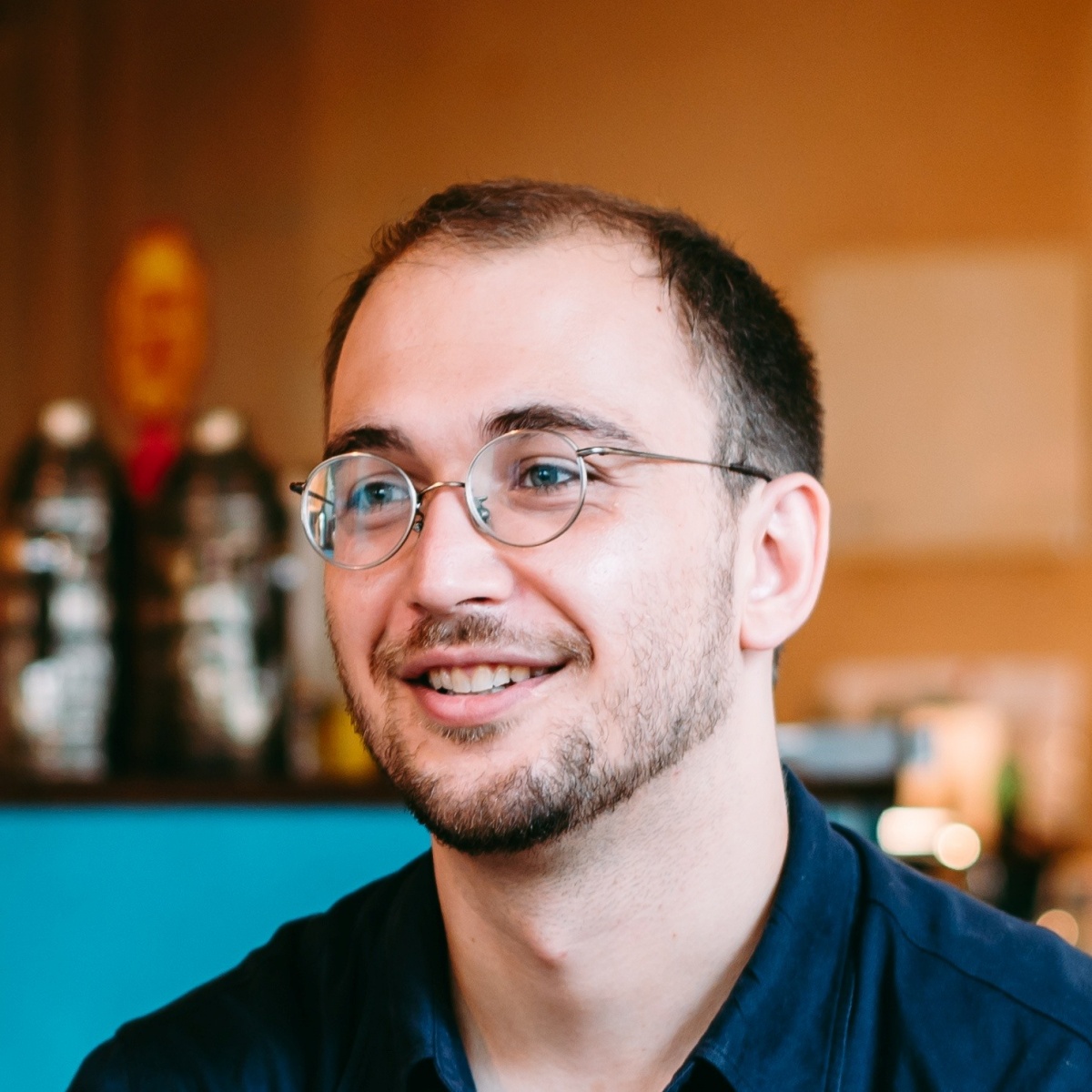
Alex Steullet
Alex is the editor in chief of Kintopia and part of the corporate branding department at Cybozu. He holds an LLM in Human Rights Law from the University of Nottingham and previously worked for the Swiss government.
